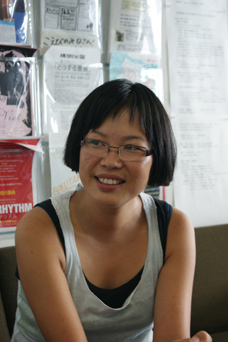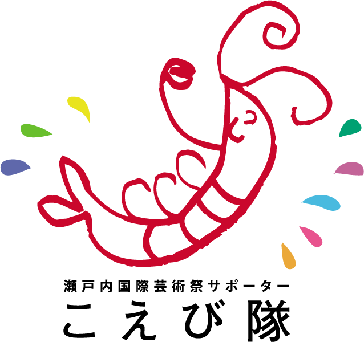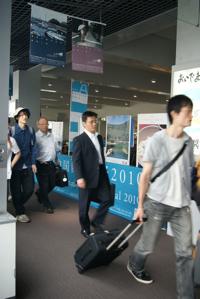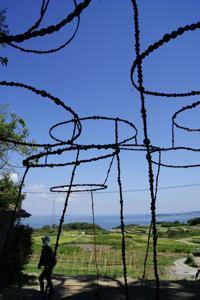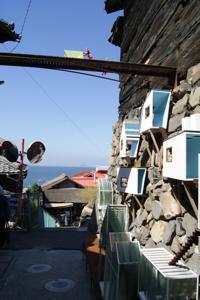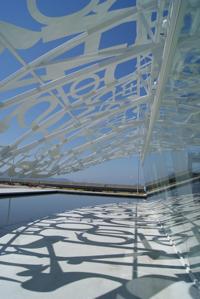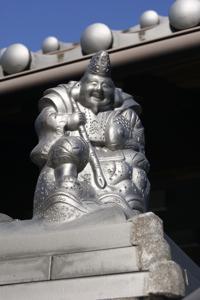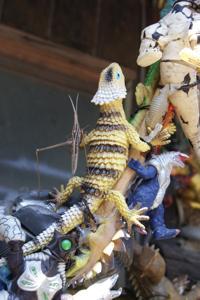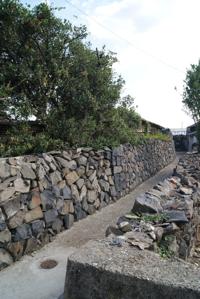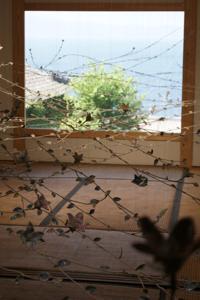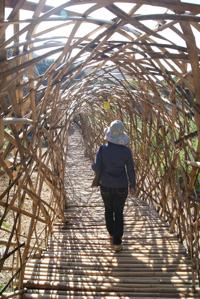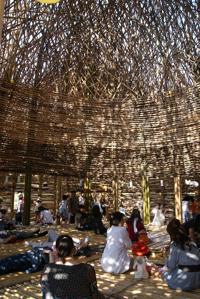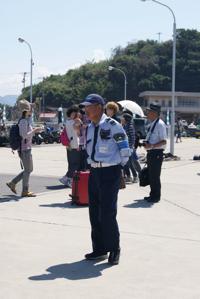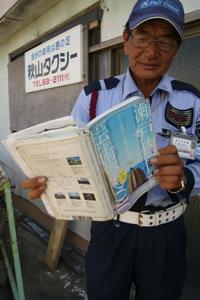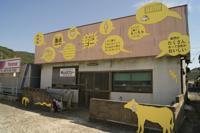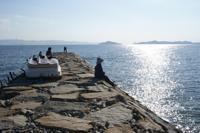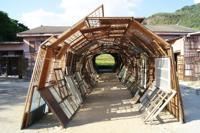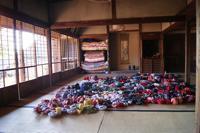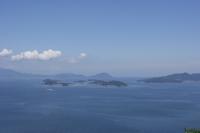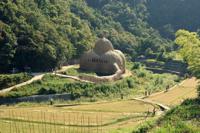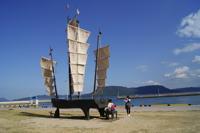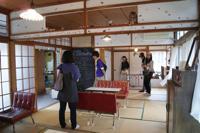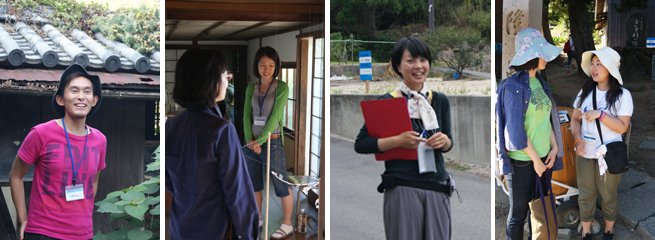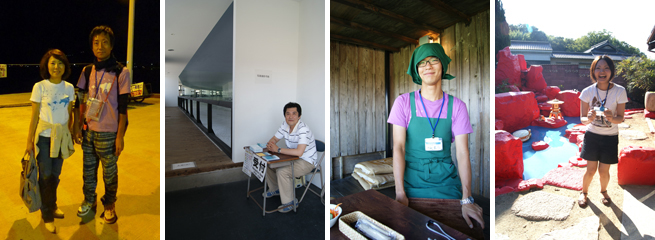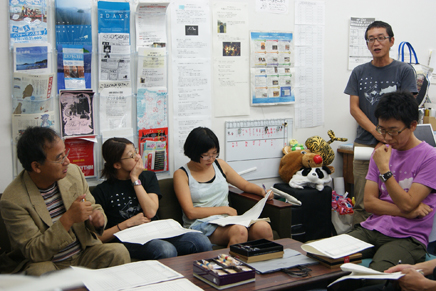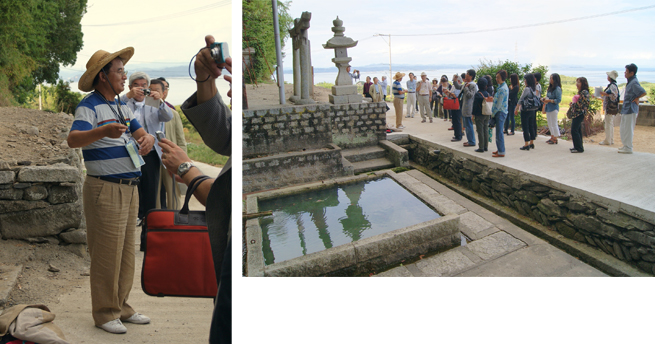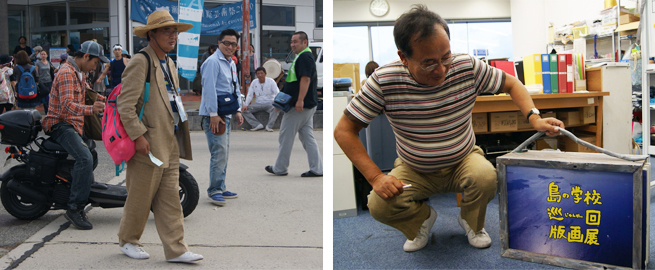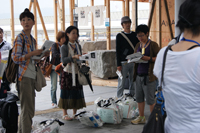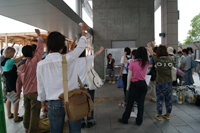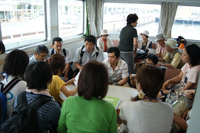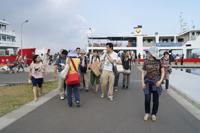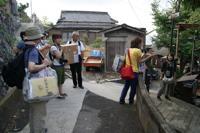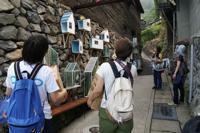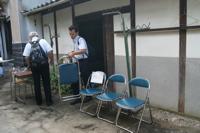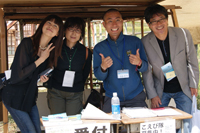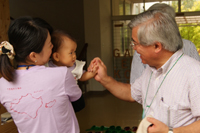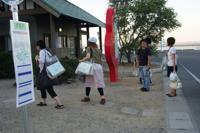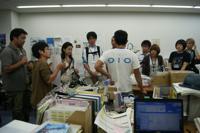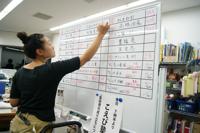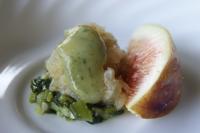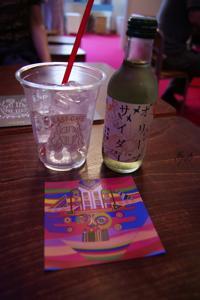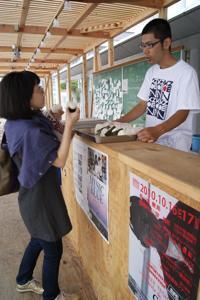Setup of volunteers supporting a large art project
There is always a lack of human resources in the field of art. Especially during projects, we need all the help we can get. However, the reality at the actual sites is that there is no room in the financial budget to increase staff or part-time workers in large quantities. Therefore, in many cases, we borrow the power of "volunteers" who voluntarily support operations by agreeing with the purpose of the project.
Smooth management of volunteers for art projects has been a long-standing task. It is a major commitment to decide to help support a project, and it is very hard to consider the right place for each volunteer while overseeing the project as a whole, sustain the feeling of enthusiasm of each volunteer and have everyone take home the feeling that it was good to have participated as a volunteer. The larger the scale of the project, the greater the effort expended on the management of volunteers.
So on this occasion, we interviewed Ayako Amari from the secretariat of the voluntary supporter organization “Koebi-tai” (“Little Shrimp Squad”) that helped the “Setouchi Triennale” *1 succeed.This art festival was held for 105 days from July 19th to October 31st 2010, and was crowded and lively with more than 900,000 visitors. Ayako Amari talked about the setup of the volunteer organization that supports the operation of the project.
*1 Setouchi Triennale: The world's first international art festival of contemporary art with venues on the islands of Naoshima, Teshima, Megijima, Ogijima, Shodoshima, Oshima and Inujima in the Seto Inland Sea and in the sea and islands around the area of Takamatsu port. 75 groups of artists from 18 countries and regions participate and 84 events were held during the festival in 2010 along with exhibits of the artworks.
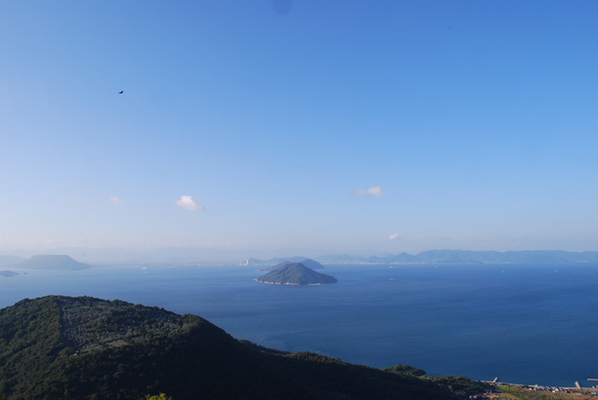 The view of Megijima and Ogijima from Teshima
The view of Megijima and Ogijima from Teshima
Please tell us about the concept and objectives of the Koebi-tai
Amari: From the beginning, the “Koebi-tai” was an "essential item" in the
Setouchi Triennale
setup. There are a wide range of people involved in creating this art festival, including Kagawa Prefecture officials, companies, directors, staff, local people and the people living on the islands where the art festival is staged. The General
Director of the Triennale, Fram Kitagawa, said right from the start that volunteer organizations would be indispensable in their "role to connect". Kitagawa decided “Let’s make one” and called for participants. In October 2009 the Koebi-tai was set
up (currently still recruiting members).
The work of the Koeb-tai is broadly divided into work “until the beginning of the art festival" and work "during the art festival". The work before the festival involves interacting with the artists in order to create the artworks. We recruited
volunteers by email etc. Individual members of the Koebi-tai go to the sites to help create the artworks each week. In the process of going to the local sites, connections with the local people are built up. The role of the Koebi-tai before the
Triennale was to form a link between the artists and the local people. During the festival, the Koebi-tai meets the many visitors to the islands and forms the frontline at the festival by mainly overseeing the exhibits and talking directly to the
customers, in addition to the role it plays in running the network between the artists and local people. Of course there are daily volunteers as well, but everyone is aware that they are working under the umbrella of the same name “Koebi-tai”. So in
this way, the next thing we will do is to provide a connection between the visitors and the festival, the artworks and the islands. The current situation is the same as how it was originally conceived, and the Triennale cannot be set up without the
Koebi-tai.
I often call them "unsung heroes". Although individual names cannot be seen, people like the mothers or children who come only come once per week or people who come from far away to participate for just 3 days, by working as a group the small
contribution made by each individual builds up and every day about 30-50 members of the Koebi-tai come to the islands and run the art festival. It is really interesting to act as a volunteer in a group, though it is open to an unspecified number of
people in the general public.
I think that the name "Koebi” is probably local. Shrimps in the Seto Inland Sea, shrimps that have an auspicious meaning. Just like in the “Kohebi-tai” (“Little Snake Squad”) in Niigata Prefecture’s “Echigo-Tsumari Art Triennial”, the “little” is added at the beginning to include the possibility of it growing. It also conveys an awareness of still being inexperienced.
When explaining the Koebi-tai to others do you call them “volunteers” or “supporters”?
Amari: I say "volunteer supporters". Of course, they are helping without payment, but they are also supporters and are participating with the awareness of their role to support the art festival.
Were you confident that people would join the Koebi-tai?
Amari: Not at all (laughs). First of all we started recruiting people on the net. We also held a briefing session in Takamatsu city. And in Okayama, as well. While explaining about the art festival with easy-to-understand words that Koebi uses, we repeatedly asked them little by little to join the group. We held these sessions once a month in both Takamatsu and Okayama. Just before the opening ceremony, we did a tour of Kansai, including Kobe, Osaka, Kyoto and Kochi and called for people to definitely join the Koebi-tai during the festival. We went around to many places as we felt certain that we could only convey our message by word-of-mouth.
I have met a lot of people who told me “Ms. Amari invited me.”
Amari: No, I am just a shadow in the background (laughs). It’s not just me, but now members of the Koebi-tai are recruiting more people by inviting others directly, “Won’t you join the Koebi-tai?” by word-of-mouth.
This is very important. There are more and more horizontal connections, now about 2,300 people (Note: as of September 2010). Of course there are also people who only register in the group, but the number has increased since the art festival began.
At first, I was not involved in art at all, but I was eager to study, serious and straightforward, and I invited the people who were interested in the Koebi-tai. In the meantime, the team gradually came together and now we are at the center of things
and trying hard to do our best. This network which was set up around February when the artwork production started is now very strong.
How often do those registered participate?
Amari: Among the 2300 registrants, there are around 1000 people who show their faces somewhere at the art festival. Among them, there are around 100 to 200 Koebi-tai members who are rather enthusiastically active. There are dozens of Koebi-tai members who use the free dormitory and are participating. There are 60 to 100 people there when the work production period is on Saturdays and Sundays. Some people make their own schedule such as every other week or only on weekends.
What is the percentage of local people? What are the age groups and male-female ratio?
Amari: About 40% of registrants are from Kagawa prefecture. About 1/3 are from Okayama. After that, there are many people from Tokyo, Saitama, Chiba, Kyoto, Osaka and other big cities. One difference compared to the Echigo-Tsumari's “Kohebi-tai”is that the average age of registrants in the Koebi-tai is about 30 years old. Tsumari has many students from Tokyo and the metropolitan area, but there is an extremely large number of business men and women in the Koebi-tai. At first I had thought that they would have been a little younger, but they have had social experience and can work things out by themselves. They are doing what they are good at, such as customer service, finances, and websites. The ratio between men and women is 3:7.
Does it work well right from the start even the first time that volunteers are participating in the Koebi-tai activities?
Amari: Even people who are on their first day in the Koebi-tai handle it well by reading the manual and independently preparing themselves. There is something called "a daily report" for each artwork. Things like what kind of questions were received or what kind of problems happened are recorded in this diary and we have now collected 58 days of such reports so if you quickly read through it you can understand in general what has happened so far. You can also see statistics such as the number of people. The veteran Koebi members can feel reminiscent of being part of it all and all of this experience can be applied for practical use as we go along. I think that Echigo-Tsumari also used such a daily report system.
Please tell me about the contents of the large "bag" that the Koebi-tai has.
Amari: It contains a set of everything necessary at the reception, such as files that summarize manuals, passports to sell, small change, insect repellent spray and mosquito coils to repel mosquitoes. This "reception bag" follows the style of the Echigo-Tsumari's Art Triennial one exactly. After seeing the Tsumari bag I customized our reception bag further by including elements that I thought "I wish it had this or that". For example, Tsumari was using a transparent plastic bag, but by the end it was in tatters. That was bad, so anyway I searched on the internet for about a week for a bag that was strong, transparent and robust for our purposes. Looking for something that could last 100 days (laughs). A little ingenuity is important for the contents of the bag. Yesterday, at last, I prepared a file of print-outs with the detailed careers and photographs of the faces of the artists and articles written by Mr. Fram Kitagawa in the Shikoku Newspaper introducing the artworks for each of the bags. So any of the Koebi can pull out the file and immediately know what kind of person created the artwork for which they are responsible. So a rather good collection of items have been put together and have culminated in that bag (laughs).
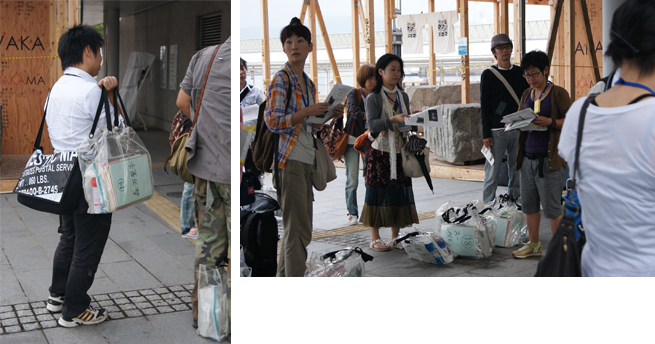
Is there anything that you are particularly concerned about day by day?
Amari: The difference between this festival and Echigo-Tsumari's "Triennale” is that the duration of the Setouchi Triennial is 105 days. Since Tsumari is only 50 days, it is over double that. If you are working for
the event all this time, you will eventually burn out. As there is a routine to the work, we need to make sure that we create a system to rotate the tasks for all of the staff well. There are also the geographical aspects. As there are Koebi coming
from Okayama and Shodoshima island as well, we gather together in three places. Everyone is posted in all different places but there is the feeling that "everyone is a part of the Koebi-tai".
The atmosphere of the people gathered in the morning is a little different each day. For example, today it’s a little noisy, or not so many people have gathered together, or it seems quiet today or people just aren’t moving at all, so even though
individuals have characters, a collective personality comes out when people gather as a group. So quickly judging the situation, we gradually think of good solutions such as changing people’s jobs in the shifts the next day.
If you put a soft person in a place that is extremely busy they will panic, so we arrange for people who are good at dealing with such situations in those posts. As each person has a different personality and differ in what they are good at, we look
at them carefully and arrange the shift with the right people in the right places. For example, a person who is not suitable for a busy place may be gentle and good at art so we may have them do something like make a sign "photography prohibited"
when there is a little time. When making these changes, it is really hard to understand what exactly is going on so we judge the situation very carefully. Every day, people are working together with some friendly rivalry.
It seems that you are also careful with management of the physical condition of the Koebi-tai.
Amari: Especially because it was hot this year it is really hard to look after yourself if you are suffering from fatigue from the heat. Initially, there were some Koebi who went without breakfast, but that is such a waste. If you are busy at lunchtime by 3 o'clock or 4 o'clock you will be completely exhausted. So anyway I make sure that they do eat, mainly by overseeing their daily eating habits at the dormitories and making sure as much as possible that everyone eats before leaving. But surprisingly I often don’t eat myself (laughs).
How is your work flow each day, Ms. Amari?
Amari: My job is in the Secretariat of the Koebi-tai. First of all, at 6:50 every morning, I take all the reception bags to the meeting places. Some Koebi come and help me. Also I make a copy of my handwritten notes
about the matters to be attended to that day called "The Daily Koebi Newspaper". I make a shift and contact network and hand it to the staff. Since the Koebi come to the meeting place at around 7 o’clock, I give the name tags to the people attending
for the first time or stick seals in the “Koebi notebook'. The Koebi notebook is like the radio exercise calendar, so the number of seals accumulate according to the number of times the Koebi participates. I take a look at their memo pads and what
they are taking, caution them about manners on the islands and have included the ideas that Koebi came up with in the notebooks, such as putting a stamp on the islands they have been to: “Let’s go around 7 islands”. From just after 7:10 we have a
meeting with all the Koebi and staff members.
Our spirits are energized by all calling out "Hooray!", and then we all board our various different boats. After that, before 8 o’clock I withdraw to the office and make the shifts for the next day and send e-mails to all of the participants "This is
the plan for the Koebi tomorrow." I also add some details such as "It seems it will rain, so please come in sneakers, not sandals". After that, I do various things such as writing blogs and manuscripts and producing the Koebi newspaper. As the Koebi
come back after 17:00, we settle the expenses, do the settlement work, and confirm the sales and then that day’s Koebi are free to go. Some days I go to the islands. Also, there are quite a lot of news materials to respond to. I am doing various
other things such as equipment procurement. The night Koebi team basically comes back at 21:30, so I can return home at about 22:00, but it gets later when I am dealing with this and that.
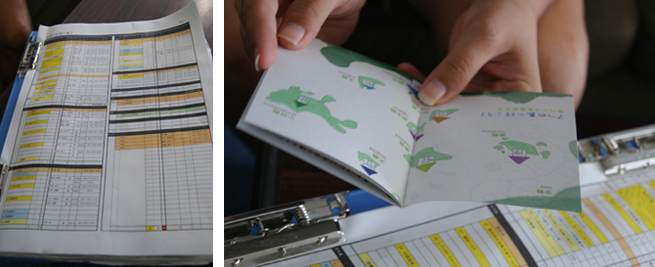
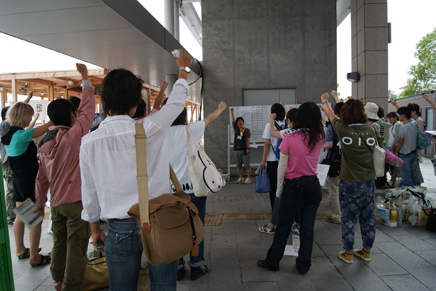
What is the process of the work flow of managing the Koebi-tai in conjunction with local government officials?
Amari: The Prefecture is the organizer, the governor is the executive committee chairperson of the art festival, and the City is involved in the mobilization of people and was originally the operation side of the art festival. The briefing session for the staff of the prefecture and the setting up of the place to hold it was also carried out by the executive committee, and we also conveyed our feelings, "We are the Koebi. Let’s do this together." When there are insufficient management personnel, I have staff members from the City or Prefecture come. Someone different comes each day. However, there were also some people who just came without understanding the contents of the art festival well. Early on there were various problems with this happening, but by the time we got into the second half, those staff members were participating for the second time and they got rather fond of everything. Our feelings change with the more that we know. That’s rather interesting. So volunteers and prefectural officials spend the day together through the artworks. Because everyone is doing something that they are not used to, at first they feel on edge. There are also a lot of things that do not go well or what we have tried to communicate to them they have not understood. There are people who do not know what to actually do even if they are told to "supervise the artwork", even if they are assigned to such a place and told to do it all day there are many people who have no idea what to do. Even for the Koebi, I have to know where they have come from and what they are doing. It is a fact that on the first day people gather together who do not know each other’s names or faces or where each other have come from, and then suddenly going to the site just by itself is quite a big thing. But as well as that, spending a whole day supervising works of art, just the two of them, it is easy to imagine just how hard that can be. Recently it has started to go well. Even some of the public official staff have joined Koebi on their days off. They are working extremely hard.
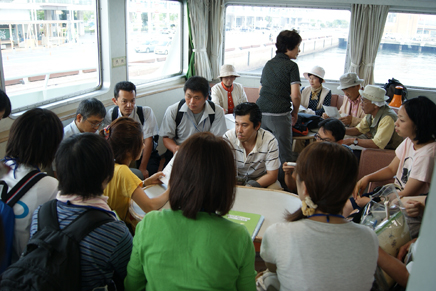
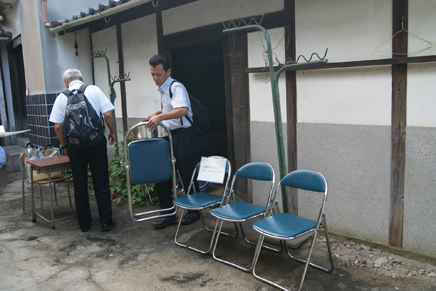
Yesterday I asked some staff members about their experience and they told me that although at first they went to supervise the artwork with a feeling of reluctance, they had been used to having no choice but to bow their heads in their usual work and only getting complaints, so one of them told me it was quite a culture shock when the visitors to the art festival said “Thank you” to them (laughs).
Amari: Although I was worried about whether it would work well or not, this is true for the Koebi volunteers as well, but as long as they can understand the meaning of being there, and they feel good going there,
having visitors greet them and being able to say “Hello” in return, they start to find the work enjoyable and fulfilling. They are happy when they are able to give a little information such as "the cat's footprints are over there", and the work
becomes personally rewarding and they feel that the work is part of them. I was hoping that would happen, but I feel happy when it actually does start to happen. When I was volunteering at Tsumari I had the experience of feeling at first that I was
helping others with their work but that feeling changed to a feeling that “I am managing this”, a feeling that the work was my own. So I felt that I wanted everyone to experience this feeling.
There are prefectural officials exclusively working on the art festival in the promotion room of the prefectural office. They form the team that manages the art festival, but it has been truly amazing this past year. The way they handled the work was
completely different from when I had been personally involved in working with them in the past. It was hard to believe that prefectural officials would do this much. It is really great. They have guts and a deep strength. I was really surprised that
they were able to do so much work.
Operations are run by employees of the Art Front Gallery, which deals with the artists, and the administrative Koebi-tai Secretariat with the official public team. Usually official public and private elements are separate and not on the same
wavelength at all but now they pool all of their energy and work hard together from before opening until 3 o'clock or 4 o'clock every day. The team is coming together. Thinking about it, I felt that it was taking such a shape because of the existence
of the art festival. For example, we can do the work connected to the artworks, but the prefecture is good at such things as local support, residents’ associations, communities, and renting houses and land.
People from the prefectural government come in shorts and T - shirts. Everyone buys a T- shirt for the next time to take home. This time there are so many public official staff involved in activities like distribution or public relations that it is
nearly impossible to take in the number. There is little difference between them and the customers.
There are also other participants from private enterprises as well as prefectural officials. It seems that a group of 16 members of the Hyakujyushi bank will join only on Saturdays, for example. A small business told us they will send 3 people to
Koebi today. The president has experienced Koebi, which is good, and so people are sent as a work assignment. The president also mingles with Koebi. Because it is a small business, it is interesting work for them to do. Fram Kitagawa often says that
Koebi-tai is "a place of learning". Telling volunteers to please eat breakfast or line up their shoes. Companies may perceive the work they can do in this way.
How do you carry out the daily reports, contacts and consultation?
Amari: In the initial period after the festival started we gathered together every day at the Koebi office, or at the office on the prefecture’s side, and held a review meeting. When Mr. Kitagawa is here we have a general meeting and make a report. We also have one today from 19:00. Koebi can take part as well. Today there is also a Koebi-tai "study group". As different people come to the Koebi-tai each day, we regularly hold study meetings. If we are not careful there will be people among the Koebi who do not know about the director, Fram Kitagawa, or do not know the dates when the festival is being held. The aim is for them to take part with a thorough understanding of why they are involved with the art festival.
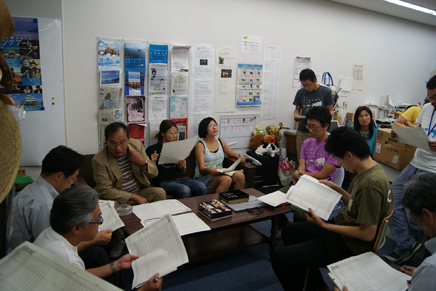
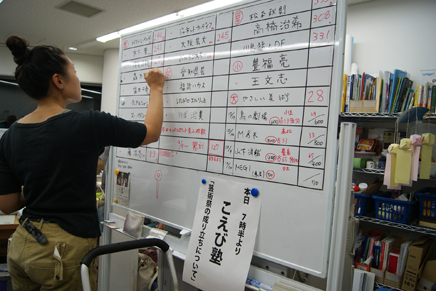
This period of the festival is halfway through but what has been the biggest crisis so far?
Amari: It was that there were not enough Koebi volunteers shortly after the start. Anyway – even as it is – there are not enough. Although the qualities of the Koebi volunteers are good, the quantity of them is
insufficient. The point is that you cannot just have anyone come to get the numbers. We need to have more people who come with the thought “Let’s do our best to hold a great art festival!” It is useless to just recruit anyone you can only because
there are not enough people.
Even so, it was terrible right after opening. The work content of preparing the artworks beforehand and the operation during the festival are totally different. During production the artists are there as well so it is all rather splendid, isn’t it?
The volunteers can do many things in the process of the artwork being made and since the works are created in a visible form, it is more interesting than the work overseeing the artwork during the festival. On Saturdays and Sundays during the work
production period, we separated the volunteers into groups at the assembly time and sent out 100 to 120 people a day to the islands.
I thought that people would carry on coming like this to help the operations during the art festival as well, but even though the numbers had suddenly increased up until about one week before the opening, on about the third day after it started, the
number of volunteers suddenly went right down.... In short, I was so puzzled wondering just what everyone thinks operations are. That was the kind of state I was in. So, then I reached the point where I could press the reset button, and after that
for about 3 weeks there was a lack of people, so things happened like not being able to open the exhibition hall, and that time was so hard that I was almost in tears .... I was calling people at night asking them if they could come the next day…
Please can you tell me once more what the good points are about having such a group of supporters, and what have been the hard parts?
Amari: The merit is "the power of word-of-mouth". It gradually spreads radially. The disadvantage is that I do not know how it will work in terms of continuity. Even if there is such a huge network, if the future direction is not clear, it will just gradually fall apart. I don’t know if it is a demerit or not but if something goes well it goes well, but if it does not go well, it falls apart. During the festival, we move forward with the flow, and it is a pleasant state to be in. However, after the festival finishes I think that it is really difficult with such a big organization as this is if everyone figures things out in a different way or we wonder how we will do things if the procedures change. In anticipation of the art festival next time, we have to consult with each other regarding how to go about it. If it is about 30 people, it is fine, but as 2000 people have registered, I get emails or other types of contact and am always thinking about things such as ways to keep up the connections. And we have to think about it so that we can connect again after three years.
Finally do you have some kind of PR message from Koebi-tai?
Amari: My message is "Please by all means come and be a Koebi.” I think that you will never get such a great opportunity as this to meet such a diverse range of people. You can have experiences that it would be hard
to usually have. For example, spending all of your time with an elderly man who you had never met before.
It is an extraordinary experience for us, but for local people it is daily life, and I think that the process of entering that environment and finding a role is an interesting experience. Until this time, volunteers may have felt that Art was
something that was found by entering a place belonging to others, such as a gallery or an art museum, but here they get immersed in life and daily things, so they get a sense of attachment to the place and the neighbors feel like friends. I
personally think that this is an interesting process. The local elderly men worry about the artworks and help by doing maintenance work, for example. While saying things like it is a bit broken. They also know that a different Koebi comes every day,
so they make sure that they go and meet them and tell them. It is really great that people who had been far from Art until that time, suddenly become so close to it. I thought that there is such a way of doing things, as well. There are also many
repeaters. They say they will come again and actually do come again, so they are moving of their own accord.
If you come here, see it and participate, you will understand a lot.
Thank you very much!

